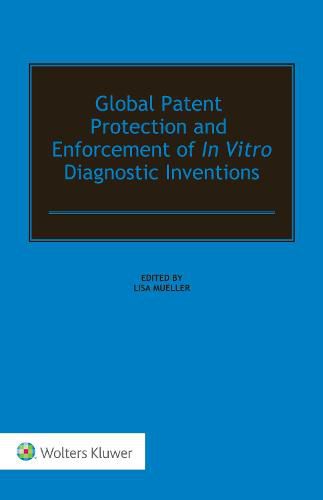Readings Newsletter
Become a Readings Member to make your shopping experience even easier.
Sign in or sign up for free!
You’re not far away from qualifying for FREE standard shipping within Australia
You’ve qualified for FREE standard shipping within Australia
The cart is loading…






Like all inventors, developers of in vitro medical diagnostic tests depend on patent protection that is enforceable against alleged infringers and ensures royalties and other payments. Due to recent United States (US) court decisions that have made the patentability of such tests untenable in the US, there is an expectation that patent applications for in vitro diagnostic inventions will increase in commercially important countries that provide broader protection. Accordingly, this book thoroughly describes the patentability requirements and enforcement challenges faced by in vitro diagnostic inventions in nine major worldwide markets, providing practical tips on how to overcome these challenges and build a globally enforceable patent portfolio for such inventions.
For each of nine jurisdictions - Australia, Canada, China, the European Union, India, Japan, Russia, South Africa and the US - an author knowledgeable in the patent law of his or her country examines such elements as the following:
subject matter eligibility;
specific patentability hurdles;
recent and relevant cases;
specific issues relating to enforcement; and
exceptions to infringement.
Specific examples of types of claims (both immunohistochemistry and molecular in vitro diagnostics) are provided, along with tips for drafting and prosecuting applications and best practices for forestalling rejections based on subject matter eligibility and prior art.
This book is the first to provide a comprehensive global examination of the patentability of in vitro diagnostic tests. The editor, a patent attorney globally known for her work with the pharmaceutical industry, has assembled a compendium of international expertise that will prove indispensable to patent practitioners (prosecution as well as litigation), corporate research teams, pharmaceutical and other companies and academics throughout the world.
$9.00 standard shipping within Australia
FREE standard shipping within Australia for orders over $100.00
Express & International shipping calculated at checkout
Like all inventors, developers of in vitro medical diagnostic tests depend on patent protection that is enforceable against alleged infringers and ensures royalties and other payments. Due to recent United States (US) court decisions that have made the patentability of such tests untenable in the US, there is an expectation that patent applications for in vitro diagnostic inventions will increase in commercially important countries that provide broader protection. Accordingly, this book thoroughly describes the patentability requirements and enforcement challenges faced by in vitro diagnostic inventions in nine major worldwide markets, providing practical tips on how to overcome these challenges and build a globally enforceable patent portfolio for such inventions.
For each of nine jurisdictions - Australia, Canada, China, the European Union, India, Japan, Russia, South Africa and the US - an author knowledgeable in the patent law of his or her country examines such elements as the following:
subject matter eligibility;
specific patentability hurdles;
recent and relevant cases;
specific issues relating to enforcement; and
exceptions to infringement.
Specific examples of types of claims (both immunohistochemistry and molecular in vitro diagnostics) are provided, along with tips for drafting and prosecuting applications and best practices for forestalling rejections based on subject matter eligibility and prior art.
This book is the first to provide a comprehensive global examination of the patentability of in vitro diagnostic tests. The editor, a patent attorney globally known for her work with the pharmaceutical industry, has assembled a compendium of international expertise that will prove indispensable to patent practitioners (prosecution as well as litigation), corporate research teams, pharmaceutical and other companies and academics throughout the world.